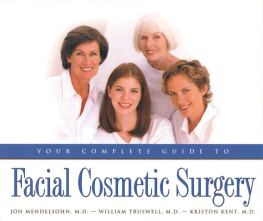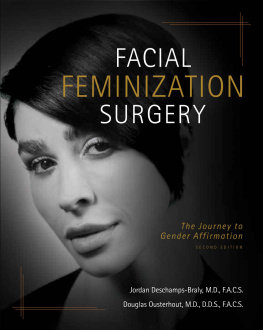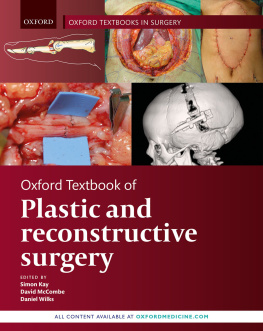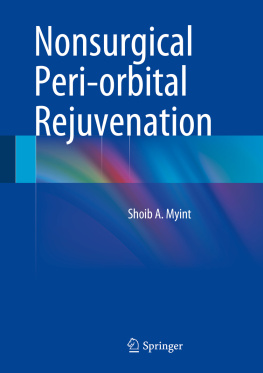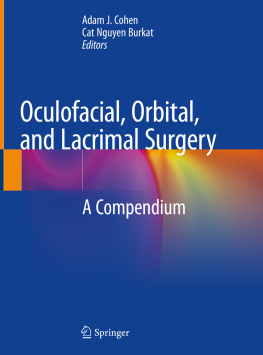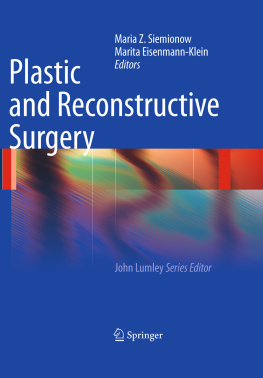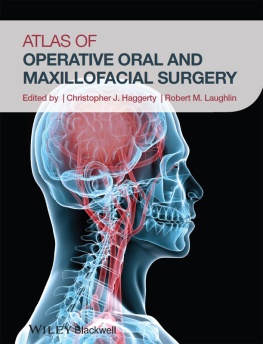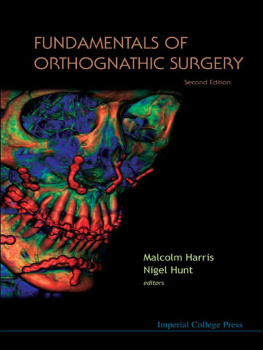Facial Plastic Surgery Clinics of North America, Vol. 19, No. 4, November 2011
ISSN: 1064-7406
doi: 10.1016/S1064-7406(11)00131-3
Contributors
Facial Plastic Surgery Clinics of North America
3D Imaging Technologies for Facial Plastic Surgery
John Pallanch, MD, MS
ENT Department, Mayo Clinic, 200 First Street SW, Rochester, MN 55905, USA
ISSN 1064-7406
Volume 19 Number 4 November 2011
Facial Plastic Surgery Clinics of North America, Vol. 19, No. 4, November 2011
ISSN: 1064-7406
doi: 10.1016/S1064-7406(11)00132-5
Contents
Facial Plastic Surgery Clinics of North America, Vol. 19, No. 4, November 2011
ISSN: 1064-7406
doi: 10.1016/S1064-7406(11)00133-7
Forthcoming Issues
Facial Plastic Surgery Clinics of North America, Vol. 19, No. 4, November 2011
ISSN: 1064-7406
doi: 10.1016/j.fsc.2011.07.015
Glossary
Anaplastologist: specialist in the prosthetic rehabilitation of absent or disfigured aesthetically critical portions of the body, such as the ear and nose
ATM: articulation temporomandibular
CAD/CAM: computer-aided design/computer-aided modeling
CBCT: cone beam computed tomography
DICOM: Digital Imaging and Communications in Medicine
DISCRETIZATION: Converting continuous models into discrete parts in a new model to make suitable for numerical evaluation
FE: finite element
FE model: finite element model
FFOF: free fibular osteocutaneous flap
HYBRID STEREOPHOTOGRAMMETRY: a combination of both active and passive methods of stereophotogrammetry (see articles by Tzou and Schendel)
IFM 3D: 3D image fusion management; database management (done with software) of the different 3D images for each patient for different kinds of imaging and different dates of image acquisition
IPL: intense pulsed light; noncoherent light from 500 to 1200 nm used with a cutoff filter for selective photohemolysis
PACS: picture archiving communication systems
PMS: patient management software
PSAR: patient-specific anatomic reconstruction; an anatomically accurate record in which all the 3D images of the patient are superimposed into one valid 3D structure, including combination with biomechanical properties
PSAR: (as per Lane and Schendel) patient-specific anatomic reconstruction; the PSAR is an anatomically accurate record in which all the 3D images of the patient (ie, computed tomography/CBCT, magnetic resonance imaging, facial surface images, teeth) are superimposed into one valid 3D structure and combined with the relevant biomechanical properties
RMS: root mean square
SLMs: stereolithographic models
Facial Plastic Surgery Clinics of North America, Vol. 19, No. 4, November 2011
ISSN: 1064-7406
doi: 10.1016/j.fsc.2011.07.001
Introduction to 3D Imaging Technologies for the Facial Plastic Surgeon
John Pallanch, MD, MS
,
Division Chair of Rhinology, ENT Department, Mayo Clinic, 200 First Street SW, Rochester, MN 55901, USA
E-mail address: Pallanch.John@mayo.edu
Abstract
3D tools for surgery allow 3D analysis of images in a way that is meaningful to surgeons for increased insight and understanding of a patient's anatomy. 3D analysis provides a way to see more than one plane at the same time in the same image. This article provides an introduction to 3D tools in the field of facial plastic surgery in 2011, beginning with a look at where surgeons would like to be and what the dream device would look like.
Keywords
Facial plastic surgery 3D imaging Facial anatomy 3D image analysis
An introduction to 3D tools in the field of facial plastic surgery in 2011 should start with a look at where we would like to be: What does the optimal facial plastic surgery 3D image dream machine look like? How close are we to having that?
The dream device would use a method of 3D imaging that would be quickly acquired, be consistently repeatable, and have no safety concerns for the patient. The imaging would yield sub-sub-millimeter 3D data, including skin surface and tone, underlying soft tissue and muscles, bone, and teeth. It would capture and store the patients 3D image, including all of their anthropometric data. The patient model could be viewed three-dimensionally from any angle and with any anatomic parts variably transparent. Through entering a few demographics, the facial appearance of the patient at various ages or weights could be displayed. The surgeon would be able to perform virtual surgery, and the healed results, incorporating the behavior of all underlying and surrounding tissues, would morph into view before the planning surgeons eyes. The results of surgery could be displayed for any selected period after the procedure. Although the results would have no more certainty than a weather prediction, the percentage probabilities of the displayed results would be given. Alternative surgical approaches could be attempted and the surgeon would be alerted as to which had the greatest risk. For discussion with the patient, it could demonstrate from any angle possible changes that might be accomplished with surgery and those that are not possible. The surgeon, in conjunction with the patient, could select the approach that might accomplish the goals in the safest and most predictable manor. It would then store the preoperative plan for viewing in the operating room.
All of this would be accomplished on a platform that would be economically accessible for wide distribution and have an optimized user interface.
I believe that most surgeons would agree that such a tool would be useful. I was anxious to find out, as I requested the 3D articles for this review of the current state of the art for 3D imaging, how close we have come to this dream scenario. The articles that follow show the great strides that have been made. How close are we? As the authors have reported, many of the prerequisites for development of the tool described have already been attained. However, most of the authors, although giving examples of the implementation of components of this vision, have also talked about the many unattained applications to be realized in the future.
3D tools for surgery allow 3D analysis of images in a way that is meaningful to surgeons for increased insight and understanding of a patients anatomy. What is meant by 3D analysis of images? There are actually many facets to what 3D analysis can do. Put simply, it is a way to see more than one plane at the same time in the same image, although this does not always mean having a stereoscopic view. When we close one eye we do not see in 3D. But if we move around an object while looking with one eye we take in more data than a single plane. When we look in a mirror, we are looking at a flat surface but are receiving 3D information. When facial data is collected in an instant using a 3D stereophotogrammetric camera, information is stored that tells more than just the skin tones present in a single plane. 3D analysis tools allow viewing the image data from various points in space to see the changing contours and tones of a surface. When a CT is performed, data are collected, forming a cloud of data points in a cube or cylinder. 3D tools can be used to show internal anatomy in cut volumes and shaded surfaces, or even to navigate virtual endoscopic pathways through this volume of data, therefore providing an added dimension in understanding of the presurgical map of a patients anatomy. It means new surgical tools that allow things to be accomplished that could not previously. The articles in this issue describe these 3D tools and others that have proven to be useful in facial plastic surgery. Other applications continue to be discovered.
Next page



